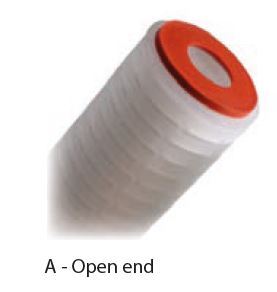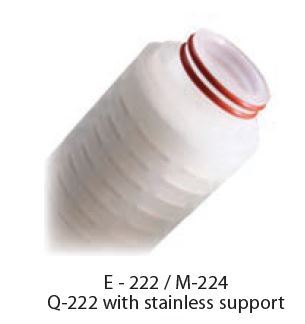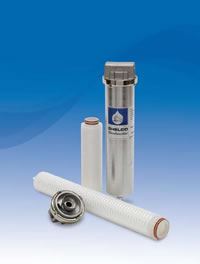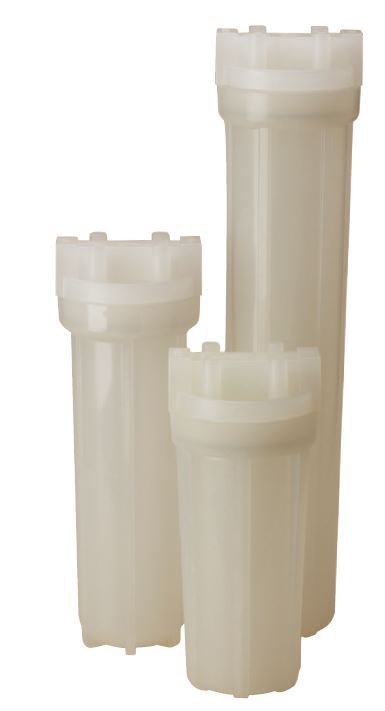With the recent spotlight on Legionella bacteria and elevated Heterotrophic Plate Counts (HPC) in drinking water appliances and ice equipment located in healthcare facilities in Australia, engineering and facility managers are faced with difficult decisions on how to reduce the risks of a Legionnaires' outbreak while keeping control on associated costs.
While the ultimate solution to controlling waterborne bacteria is the installation of strategically placed treatments such as chlorine dioxide and liquid chlorine dosing systems, in many cases, achieving disinfection at every outlet in the facility is often unachievable.
Acting on the Queensland Health directive issued in February 2016, facility managers are tasked with removing of carbon based water filters located on drinking fountains, chilled water systems and ice equipment and replacing them with carbon-free types and 0.2 Micron absolute rated filters.
With so many options and confusing technical jargon from water filtration experts, we have put together this brief outline of some features to look for in a quality filtration system.
While in many cases it may be tempting to move forward with a lower cost solution, it is important to take into account plumbing and maintenance costs as well as the actuall performance of the product, does it work or not.
Double-Open-End v's Single-Open-End Type Cartridge Filters
The below article briefly outlines the primary differences of the two types of cartridge systems available in Australia.
Double-Open-End (DOE or Drop-In)

These types of cartridges look like a hollow cylinder with a seal at on both ends. The cartridge is clamped inside a plastic or stainless housing between two circular sealing points.
Water enters the housing on the outside of the cartridge cylinder and is forced through the filter media which in turn removes particulates and dirt.
As the design of this system relies on a the clamping pressure on each end of the cartridge and a good rubber seal, any damage to the sealing areas can allow some of the dirty water to bypass the seal allowing dirt and bacteria can enter the water system.
While sub-micron DOE cartridges are readilly available on the market, it is important to understand the limitations and potential bypass of untreated water.
Single-Open-End (Positive-Seal or 222 Seal)

These filters have a similar construction to a Double-Open-End cartridge with the difference that one end is completely sealed and the outlet end has a double O-ring type seal (222 or 226 Seal). This o-ring seal fits tightly into the filter head and provides a positive seal.
Water enters the housing on the outside of the cartridge and is forced to pass through the filter media which removes particulate and dirt.
This type of seal is preferred over the clamp-style seal as it provides a perfect seal against even the smalles particulate and bacteria and hence is the preferred connection when treating critical applications including bacteria and Legionella.
See the diagram below:
Absolute v's Nominal Rated Performance
Considering the filtration performance rating for your application is critical to successful removal of bacteria. A filters rating is normally expressed in microns which tells us what size particles it will remove.
The important thing to understand is that a water filter is either Nominal or Absolute Rated which is explained below.
Absolute Rated
The micron rating of an absolute rated water filter is based on the largest size of particle that can pass through the filter media. This generally means that 99.99% of particles of that size or larger will be retained by the water filter.
While many filter brochures may claim absolute ratings, it is important to check the validation guide to confirm what level has been achieved for that particluar cartridge.
Fact: The industry standard recommended filter rating for removal of waterborne bacteria is 0.2 microns (absolute rated)
Absolute rated water filters are guaranteed by the manufacturer to achieve a certain performance. Hence, when it comes to removal of bacteria in potable water supplies, it is important to select the right cartridge to ensure a complete barrier to the bacteria.
Nominal Rated
The micron rating of a nominal rated water filter is based on the smallest size of particulate that will be trapped in the filter media. Generally, a nominal rated filter will retain between 70-90% of particles at the rated micron size.
Nominal water filters are a cost-effective method of removing bulk particulate and it is best practice to install a pre-filter to catch most of the dirt and protect the more expensive absolute rated cartridge.
Ask your water treatment vendor for assistance and recommendations when selecting the best combinations of water filters.
Plastic v's Stainless Steel Housings
With so many options available on the market today, there are many types and brands of water filter housings available for use.
The below article is a guide for engineering staff which outlines some of the features offered by two of the most common types of sanitary filter housings available.
Stainless Steel Housings
Stainless steel housings offer advanced benefits including high pressure ratings as well as higher temperature applications.
While the cost is significantly above that of alternative polypropylene housings, they are definitelly the housing of choice for longevity while the higher pressure ratings ensure leak-free operation.
When selecting a stainless filter housing, take careful note of how the sump connects to the filter head. The ring-closure type has a separate threaded locking ring that fits snugly around the sump and threads up onto the filter head.
Some types of stainless housings utilise a tie-rod that screws through the filter head and threads into the sump. While cheaper, these housings are prone to leak due to the clamp-type seal.
See the diagram above for some idea of the locking ring type of housing.
Pure Polypropylene Housings

Manufactured from virgin polypropylene, these housings feature smooth internal surfaces that prevent bacterial adheasion.
Available in styles to suit both DOE and SOE cartridges, these housings can be coupled together to create a multi-stage filtration set which can be mounted to a wall bracket.
Need Help?
Call Aquastream on 1800 446 500 or email your enquiry to sales@aquastream.com.au
Disclaimer: The information published in this article is general in nature and is for published for the sole purpose of outlining some key differences of products available generally on the market. Always consult a water professional before investing in water filtration equipment to ensure great results.

